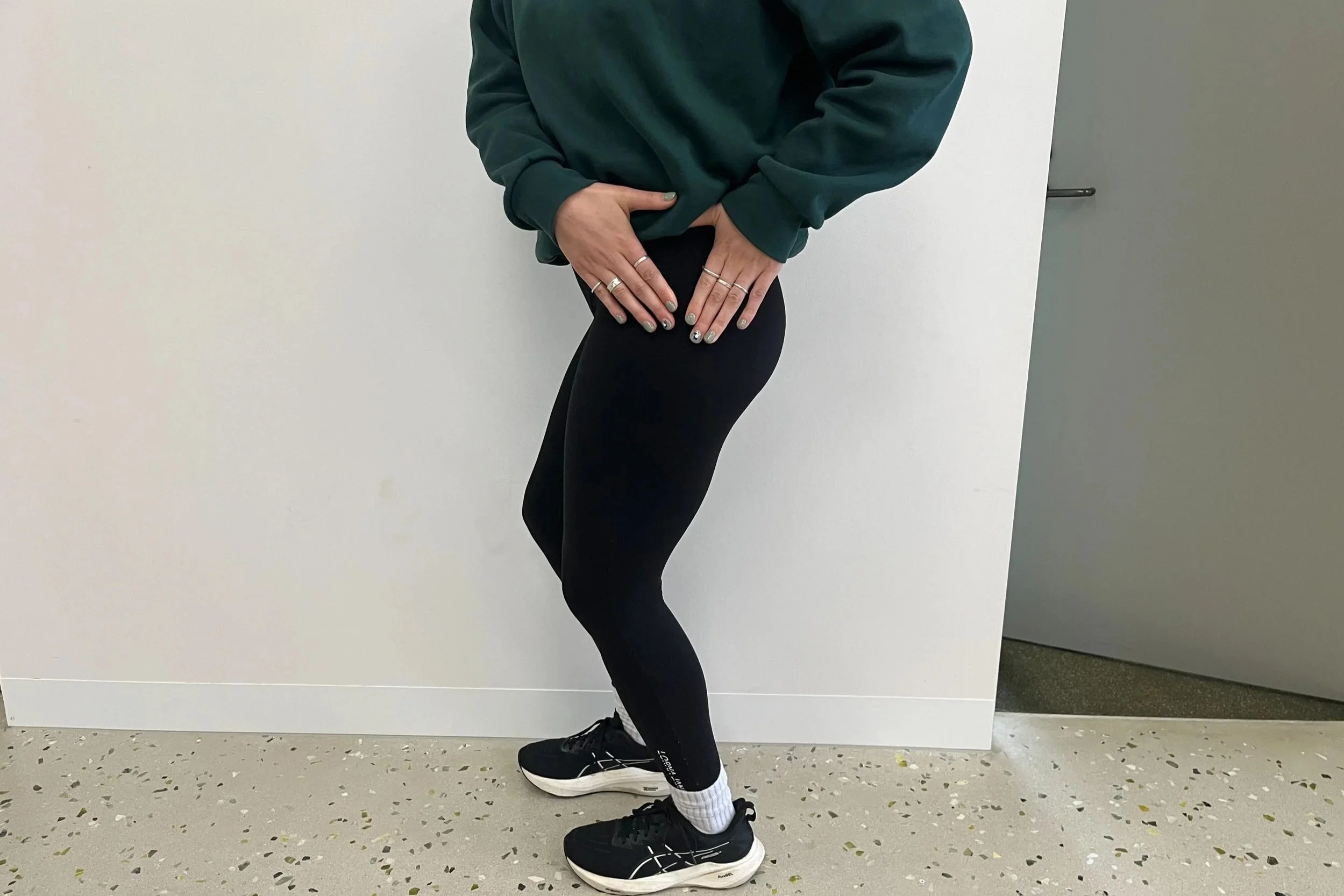A Pain in the Butt: Gluteal Tendinopathy
If you have a nagging pain on the outside of your hip, especially when walking, climbing stairs, or lying on your side, you might be dealing with gluteal tendinopathy, often called glute tendinopathy for short.
What is gluteal tendinopathy?
Gluteal tendinopathy is a common condition that affects about 10–25% of people. It usually involves the gluteus medius and minimus tendons and can sometimes include inflammation of the trochanteric bursa. It most often affects post-menopausal women but is also common in younger active people, such as runners.
Common symptoms
Ongoing pain on the outside of the hip, sometimes spreading down the side of the thigh
Pain during or after activities like standing, walking, shopping, running, sitting, or climbing stairs
Trouble lying on either the sore or the opposite side
Morning stiffness, especially the day after activity
Pain when pressing on the outside of the hip
A physiotherapist or other qualified health professional can perform tests to confirm the diagnosis. Scans such as ultrasound or MRI can be used but are not needed for accurate diagnosis and treatment.
What happens in the tendon?
Gluteal tendinopathy causes small changes in the tendon’s structure due to too much load or pressure. Systemic and metabolic factors can also make the tissue less healthy and slower to adapt. Thickening of the bursa near the greater trochanter can occur for the same reasons.
What are the risk factors?
Menopause or hormonal changes
Being overweight or having high levels of body fat
Having wide hips (coxa vara)
Poor hip strength or stability due to deconditioning or hip conditions such as dysplasia
How is it managed?
ReDUCING COMPRESSION LOAD
These forces can stress the tendon and worsen symptoms.
Suggestions:
Sit in higher chairs
Follow the saying “good leg to heaven, bad leg to hell” when using stairs. This means lead with your stronger leg when going up and your sore leg when going down.
Avoid glute stretches; instead use trigger release or massage if the area feels tight
ACTIVE LOAD MANAGEMENT
This involves identifying and changing aggravating activities and following a graded exercise program from a physiotherapist to restore strength and tendon capacity.
Exercises that may be used include:
Abductor isometrics
Side-lying leg lifts
Bridges → offset bridges → single-leg bridges
Squats
Step-ups
Side sliders
Corticosteroid or PRP Injections
These are sometimes used for short-term pain relief. However, research shows they do not provide medium or long-term benefits and should only be used with a proper rehabilitation plan.
Conclusion
Gluteal tendinopathy is a common cause of pain on the outer side of the hip. It can have a big impact on daily life, especially for post-menopausal women and active people. Although it can be slow to settle, it can be well managed. Recovery focuses on reducing compression, changing aggravating activities, and following a progressive rehabilitation plan. Injections may help short term, but long-term results are best with education, load management, and strengthening. Early help from a physiotherapist can make a big difference in recovery and in preventing the pain from coming back.
References:
https://www.sciencedirect.com/science/article/pii/S2468781225000013
https://www.sciencedirect.com/science/article/pii/S1836955325000177?ref=pdf_download&fr=RR-2&rr=98c2e5db1bab5aa8
https://www.physiotherapyjournal.com/article/S0031-9406(24)00002-6/fulltext
Are you suffering from pain on the outside of your hip and seeking relief? Book an appointment with one of our physiotherapists today.
Author: Annie Cumming, Balance North Preston Physiotherapist

